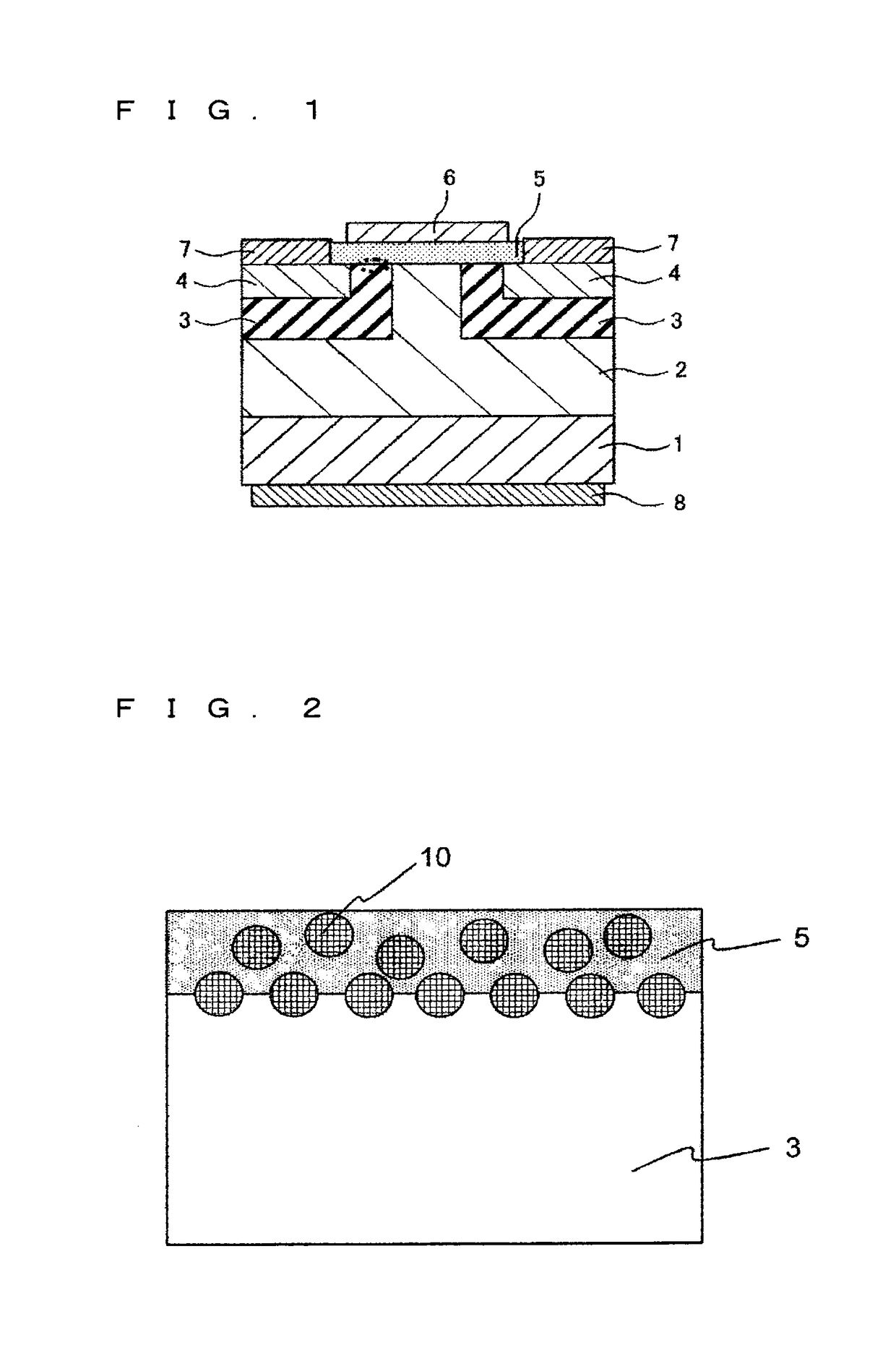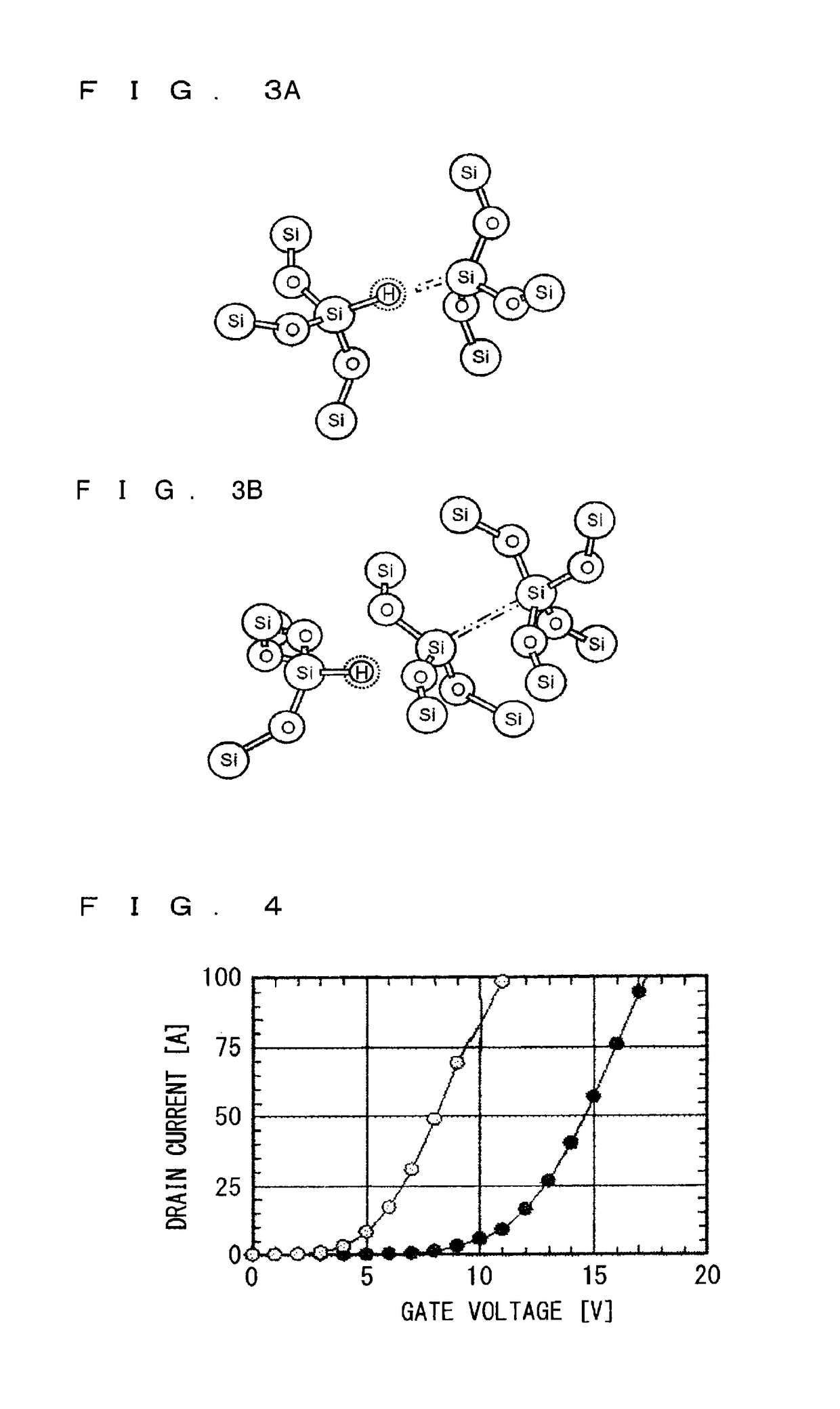Silicon carbide semiconductor device
a technology of silicon carbide and semiconductors, applied in the direction of semiconductor devices, basic electric elements, electrical appliances, etc., can solve the problems of more interface traps at the mos interface and poor quality of the mos interface, and achieve the effect of reducing the decrease in channel mobility, effectively increasing the threshold voltage, and improving the trade-off relationship between channel mobility and threshold voltag
- Summary
- Abstract
- Description
- Claims
- Application Information
AI Technical Summary
Benefits of technology
Problems solved by technology
Method used
Image
Examples
first embodiment
[0034]First, an element structure of a silicon carbide semiconductor device in a first embodiment of the present invention is described. FIG. 1 is a cross-sectional view showing the silicon carbide semiconductor device in the first embodiment of the present invention. In this embodiment, an n-channel silicon carbide MOSFET is described as an example of the silicon carbide semiconductor device.
[0035]As shown in FIG. 1, a drift layer 2 of a first conductivity type is formed on a surface being a first main surface of a silicon carbide substrate 1 of the first conductivity type, and two well regions 3 of a second conductivity type are provided at an interval in a surface layer portion of the drift layer 2. Source regions 4 of the first conductivity type are formed in part of a surface layer portion of the well region 3, and a gate insulating film 5 is formed on part of surfaces of the well regions 3 and the source regions 4. A gate electrode 6 is formed on a surface of the gate insulati...
second embodiment
[0131]FIG. 21 is an enlarged cross-sectional view around a MOS interface of a silicon carbide semiconductor device in a second embodiment. In this embodiment, a gate insulating film 5 includes nitrogen atoms. This embodiment is the same as the first embodiment except for this. This embodiment can further increase a threshold voltage.
[0132]Nitriding receives attention, the nitriding performing a heat treatment on the gate insulating film 5 in an atmosphere of a nitrogen gas such as a nitrogen monoxide (NO) gas and a dinitrogen monoxide (N2O) gas for the purpose of increasing channel mobility of the MOSFET including silicon carbide. The nitriding makes inert interface traps due to surplus C at the MOS surface and increases the channel mobility.
[0133]In this embodiment, after the gate insulating film 5 in FIG. 10 in the first embodiment is formed, the silicon carbide substrate 1 having the structure in FIG. 10 is transferred into a nitriding furnace prior to reoxidation. The temperatur...
PUM
 Login to View More
Login to View More Abstract
Description
Claims
Application Information
 Login to View More
Login to View More - R&D Engineer
- R&D Manager
- IP Professional
- Industry Leading Data Capabilities
- Powerful AI technology
- Patent DNA Extraction
Browse by: Latest US Patents, China's latest patents, Technical Efficacy Thesaurus, Application Domain, Technology Topic, Popular Technical Reports.
© 2024 PatSnap. All rights reserved.Legal|Privacy policy|Modern Slavery Act Transparency Statement|Sitemap|About US| Contact US: help@patsnap.com










